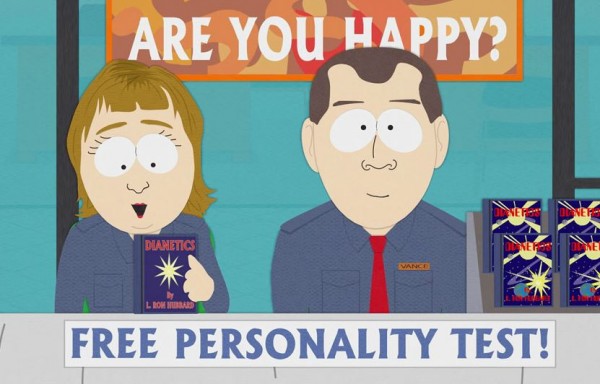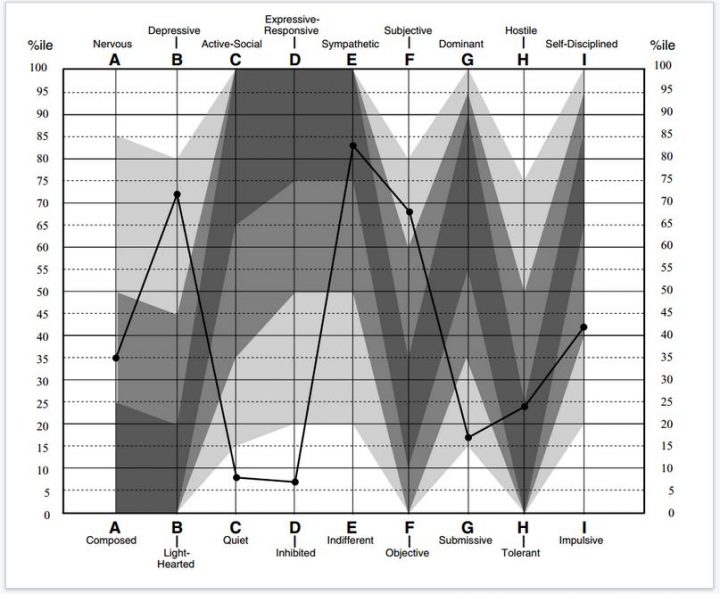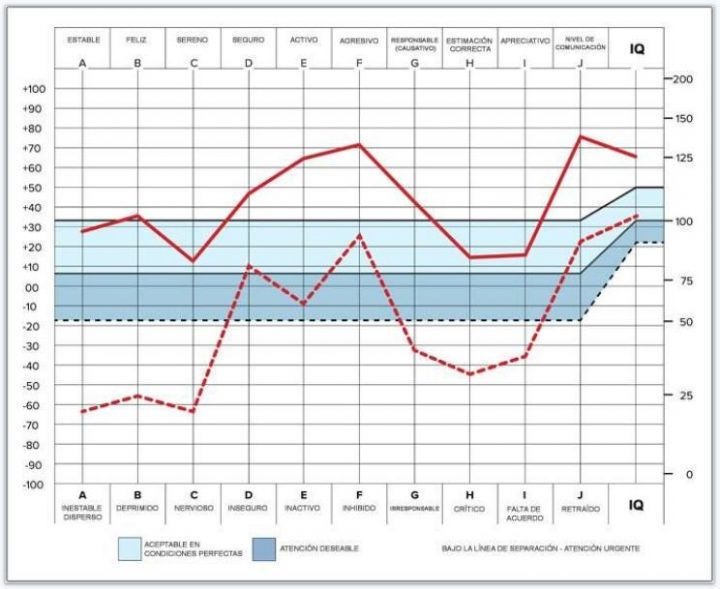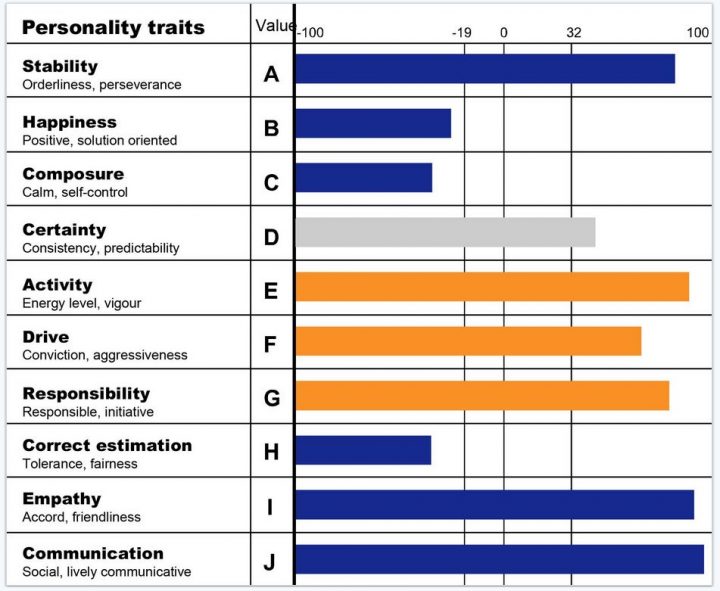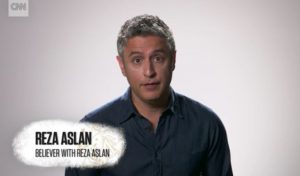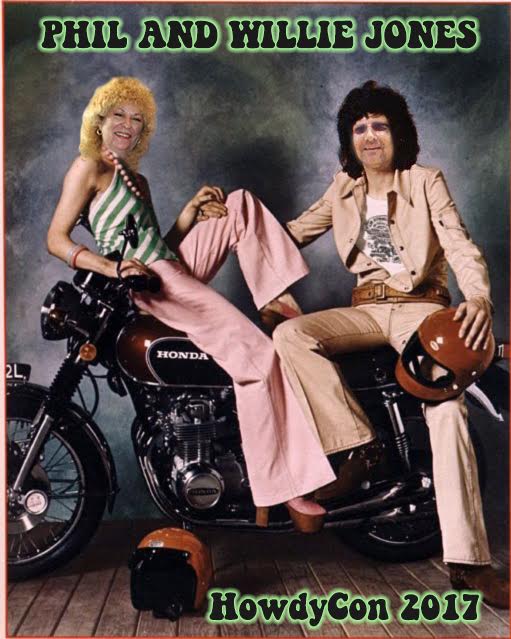Rod Keller examines Scientology’s gateway drug — the personality test!
Recent articles in the New Statesman, in Australia, and The Tab join the dozens of articles over the years that describe the experience of completing Scientology’s free personality test, the Oxford Capacity Analysis. None yet discuss the “correct” answers, although they have been available on the Internet for years.
The test consists of 200 questions, the answer to each being yes, no, or maybe. Each answer is awarded from 1 to 7 points which are assigned to one of 10 categories: Stability, Happiness, Composure, Certainty, Active, Aggression, Responsibility, Correct estimation, Appreciation or Communication level. The answer “maybe” never has more points assigned than either “yes” or “no,” so each question has a “correct” answer that will lead to a higher score.
The test is available in person or online, although the results are only available in person at a Scientology org or mission. The Oxford Capacity Analysis, or OCA, is unrelated to Oxford University. It was copied and modified by L. Ron Hubbard in the 1950s from the Johnson Temperament Analysis (JTA), a test developed in 1941 by eugenics professor Dr. Roswell H. Johnson.
The OCA is one of Scientology’s primary recruiting tools. A former staff member says, “The person is told what the test says about them (bearing in mind that this is what they think of themselves – not what others think of them) and whatever the issues are, they’re then told ‘Scientology can help with that.’ The person is shown whatever Div 6 service would be best to handle their ‘issues’ (like the Communication Course, one of the Life Improvement courses or Dianetic Auditing).”
Test results may have a flower symbol on one of the data points to indicate there is an inconsistency in the results. “It’s a false state and is not actually what is depicted on the graph. Or it’s a serious situation needing addressing urgently (like suicide risk). The person is saying they can communicate easily, or they work well and are really busy and operate at a high level of activity. But the points next to it or traits that correlate with it don’t add up or match it. Often it indicates a manic way of operating. So the person thinks they’re very busy, but in actual fact they aren’t. Something may be forcing this person to be active but it’s not their normal level of operation and they’re fudging it to get through and prone to outbursts of severe anger because of the stress.”
However, the test is outdated, with questions about train timetables and the “modern ‘prisons without bars’ system.” It can never be updated because of Scientology’s prohibition on altering the writings of Hubbard. A low literacy level can also be a problem. “There are specific instructions that under no circumstances may anyone explain a question to the testee. Unless you are pretty well educated those questions are hard to grapple with. Even the English and sentence structure would be alien to a lot of people these days. I used to just go through the motions of letting a person fill in the test but then I generally ignored the results as they were useless. I would get the graph, show it to the person and then ask them questions and let them tell me what they thought. Ninety percent of people know what is needed and if you offer them a solution to that problem, they will jump at it.”
The former member now feels the test contradicts one of the fundamental instructions of Scientology. “It was absolutely forbidden to ‘evaluate’ for a person (tell them what is wrong with them). LRH went on and on about this and how this was where the field of Psychology and Psychiatry went wrong, telling the person what was wrong with them. It was supposed to be through auditing and training that the person themselves has the ‘cognition’ of what the problem was. For me, the OCA test belied everything Scientology was supposed to do – get the person to originate what the problem is as opposed to telling them what their problem is.”
Scientologists continue to take the test as they progress up Scientology’s Bridge to Total Freedom. “You take this test numerous times. It’s supposed to be done before and after every major auditing action or level – the idea being that the graph will show improvement and a raising of the various characteristic levels to ‘desirable levels.’ Throughout my Scientology life I probably did in excess of 50 OCA tests. I got so good at it that all my readings were always on the top of the graph. Of course I knew what the ‘desirable’ answers were because I’d marked so many. Anyone who’s done the test more than 10 times is no longer being truthful and the test is not an accurate measure of the state of the mind of the person.”
Scientology uses the test in other settings as well with people who are not considering becoming a member. The Narconon drug rehab program administers the test as a before/after confirmation that the patient improved during their stay. The World Institute of Scientology Enterprises (WISE) administers the test to prospective employees to identify those with high “outflow.” Performia (formerly known as U-MAN) is a WISE consulting company that administers the test, which they call the “Exec-U-Test.” They sell software that scores the test, and have a customized vertical bar chart instead of the traditional line graph usually associated with the test.
The company claims “You should avoid candidates who could become a liability right from the start. You can know all of this and more with Performia’s online candidate screening system. The system is so accurate that our clients make it a policy not to hire anyone internally without having them screened through Performia first.”
In a 2005 article Performia claimed “The test reveals if your salesperson will allow unreasonable discounts or if he or she will sell at the highest price. You will know for a certainty if your purchasing director overprices. You will realise why people at one company are always nervous and drowning in tears while employees of another company come to the office an hour late and stop for a smoke a hundred times a day.”
They also claim to be able to identify troublemakers, known in Scientology as Suppressive Persons. “In fact, only one or two workers are muddying the waters and the skies will clear as soon as you fire them. But how can you track down these people? Usually you are suspicious of people who create a clamour. However, the real saboteurs stay in the background. The EXEC-U-TEST Personality helps to find the actual troublemakers.”
Regardless of the setting, Scientology’s personality test cannot be considered scientific. Like Scientology itself, there is no testing for accuracy, no debate or experimentation. The writings of L. Ron Hubbard are followed unquestioningly. The Oxford Capacity Analysis is used as a recruiting tool, and to prove that a person has received benefit from their Scientology courses. It also serves as a product for sale by Scientology’s many business consultants.
— Rod Keller
——————–
Tonight, Reza Aslan will pretend that independent Scientology is actually more than a few old Scientologists pining for what once was. In his Believer episode on CNN at 10 pm, he’ll try to convince viewers that L. Ron Hubbard gets a bad rap, and that indie Scientology is the next great world religion. CNN has not let us see the episode ahead of time, but on Tuesday we looked at some of the things that Aslan has been saying about it in interviews. And we asked a couple of experts we admire the most to give us their thoughts as well…
Jefferson Hawkins, author of Counterfeit Dreams…
I read your piece, yes. I thought it was a good breakdown. I don’t know much about Aslan and haven’t paid much attention to his series. I’m familiar with the mindset, though – “all religions are good, they are just different takes on the same spiritual truth” and so on. When I lived in Santa Barbara, I had dinner with Gordon Melton who has a similar viewpoint. He was doing “religious studies” on Scientology and just by nature of granting them that much seriousness, it tended to skew his coverage. He was always looking for parallels with other religions and looking how to justify and explain Scientology in scholarly, religious terms. I rubbed his nose in the abuses and he pretty much said flat-out that he didn’t want to antagonize Scientology because then he would “lose his access.”
Aslan is making way too much of “Indie Scientology.” Yes, pretty much everyone who comes out goes through an “Indie” phase where they still “believe in the tech.” Mine lasted for about two weeks. Some people stay in that phase for a year or two, and a few hard-liners just never move beyond it. There was a big and vocal Indie movement in 2010 or so, but then it pretty much disappeared except for a dozen or so hard liners. An Indie movement is hard to maintain, because Scientology at its core is very authoritarian and strict. You have to follow Hubbard’s writings “100 percent.” But any Indie inevitably starts picking and choosing which bits they want to follow, and they get into disagreements and battles about “who is more on-Source.” So any group tends to splinter and fall apart and become just a bunch of individuals, each doing their own thing. To hold together, they would have to become exactly like the Church of Scientology, with Ethics “tech,” Disconnection, penalties, and all the rest of it, which no Indie is going to do.
Professor Stephen Kent…
Yes, I did read your article about Reza. He also had spoken with me a long time ago, and I seem to remember that he wanted someone who was more focused on the ‘experience’ of Scientology rather than a critical view of it (which is kinda what you said, too). Looking at Scientology amidst all the publicity that the group has gotten over the last few years, may not have been the wisest choice, and then focusing on a small number of independents seems misplaced.
Although he has a PhD in the sociology of religions from UC Santa Barbara (which I understand to be a very good program), its location in a religious studies (as opposed to a straight sociology department) may explain his approach to the groups he is examining. Here’s the key quote form the program’s website:
“comparative analysis is strongly encouraged—between groups, individuals, localities, societies or nations, religions, and/or historical periods. The goal is to understand not just particular religious episodes in human history but also what is common and what varies across traditions and cultures”
Now, I too, came out of religious studies PhD (at McMaster University in Hamilton, Ontario), but that program was within the social sciences faculty (as far as I can remember), and my connection was with a professor in the sociology department (and some of my publications as a grad student were in sociology journals).
Religious studies programs with Arts faculties may be more humanities oriented. Now I don’t know where Santa Barbara’s religious studies program is located, or how it relates to a sociology department, but his approach seems very ‘humanities’ oriented (as you pointed out).
Sunday night approaches quickly. Sigh.
Best Regards,
Steve.
——————–
HowdyCon 2017: Denver, June 23-25. Go here to start making your plans.
——————–
Bernie Headley has not seen his daughter Stephanie in 4,701 days.
Quailynn McDaniel has not seen her brother Sean in 1,804 days.
Claudio and Renata Lugli have not seen their son Flavio in 2,298 days.
Sara Goldberg has not seen her daughter Ashley in 1,338 days.
Lori Hodgson has not seen her son Jeremy in 1,050 days.
Marie Bilheimer has not seen her mother June in 517 days.
Joe Reaiche has not seen his daughter Alanna Masterson in 4,635 days
Derek Bloch has not seen his father Darren in 1,805 days.
Cindy Plahuta has not seen her daughter Kara in 2,125 days.
Claire Headley has not seen her mother Gen in 2,100 days.
Ramana Dienes-Browning has not seen her mother Jancis in 456 days.
Mike Rinder has not seen his son Benjamin in 4,758 days.
Brian Sheen has not seen his daughter Spring in 865 days.
Skip Young has not seen his daughters Megan and Alexis for 1,267 days.
Mary Kahn has not seen her son Sammy in 1,140 days.
Lois Reisdorf has not seen her son Craig in 721 days.
Phil and Willie Jones have not seen their son Mike in 1,226 days.
Mary Jane Sterne has not seen her daughter Samantha in 1,470 days.
Kate Bornstein has not seen her daughter Jessica in 12,579 days.
——————–
 Posted by Tony Ortega on March 26, 2017 at 07:00
Posted by Tony Ortega on March 26, 2017 at 07:00
E-mail tips and story ideas to tonyo94 AT gmail DOT com or follow us on Twitter. We post behind-the-scenes updates at our Facebook author page. After every new story we send out an alert to our e-mail list and our FB page.
Our book, The Unbreakable Miss Lovely: How the Church of Scientology tried to destroy Paulette Cooper, is on sale at Amazon in paperback, Kindle, and audiobook versions. We’ve posted photographs of Paulette and scenes from her life at a separate location. Reader Sookie put together a complete index. More information about the book, and our 2015 book tour, can also be found at the book’s dedicated page.
The Best of the Underground Bunker, 1995-2016 Just starting out here? We’ve picked out the most important stories we’ve covered here at the Undergound Bunker (2012-2016), The Village Voice (2008-2012), New Times Los Angeles (1999-2002) and the Phoenix New Times (1995-1999)
Learn about Scientology with our numerous series with experts…
BLOGGING DIANETICS: We read Scientology’s founding text cover to cover with the help of L.A. attorney and former church member Vance Woodward
UP THE BRIDGE: Claire Headley and Bruce Hines train us as Scientologists
GETTING OUR ETHICS IN: Jefferson Hawkins explains Scientology’s system of justice
SCIENTOLOGY MYTHBUSTING: Historian Jon Atack discusses key Scientology concepts
Other links: Shelly Miscavige, ten years gone | The Lisa McPherson story told in real time | The Cathriona White stories | The Leah Remini ‘Knowledge Reports’ | Hear audio of a Scientology excommunication | Scientology’s little day care of horrors | Whatever happened to Steve Fishman? | Felony charges for Scientology’s drug rehab scam | Why Scientology digs bomb-proof vaults in the desert | PZ Myers reads L. Ron Hubbard’s “A History of Man” | Scientology’s Master Spies | Scientology’s Private Dancer | The mystery of the richest Scientologist and his wayward sons | Scientology’s shocking mistreatment of the mentally ill | Scientology boasts about assistance from Google | The Underground Bunker’s Official Theme Song | The Underground Bunker FAQ
Our Guide to Alex Gibney’s film ‘Going Clear,’ and our pages about its principal figures…
Jason Beghe | Tom DeVocht | Sara Goldberg | Paul Haggis | Mark “Marty” Rathbun | Mike Rinder | Spanky Taylor | Hana Whitfield





